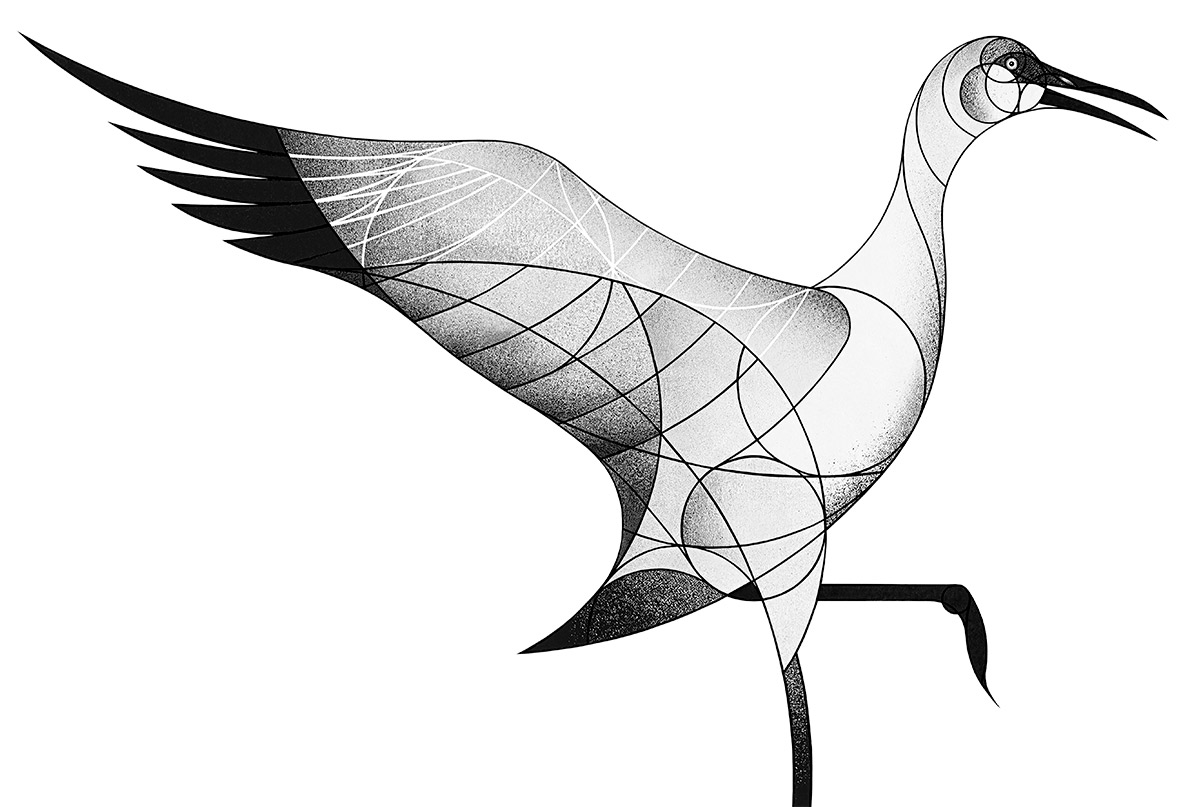The Voices of Birds and the Language of Belonging
Open storyDavid Haskell enters the intricate and generative soundscape of the world of birds.
Practice 04
Emergence practices offer meaningful ways of connecting to the living world, inviting you to bring an element of one of our stories into your life. Inspired by the essay “The Voices of Birds and the Language of Belonging,” this practice invites you to step into an attentive relationship with the voices of birds.
When bird language entered my life, I felt that a new sense had been grafted into me. Bird voices opened a fresh dimension of sensory experience. This expansion drew me into stories of my home in unexpected ways, revealing ecological rhythms and connections, stimulating my curiosity, and suffusing me with a sense of belonging.
The practice of listening to other species is the original “augmented reality.” In opening our minds to the language of species, we experience connection and meaning that far transcend anything offered by electronic simulacra. Why so deep? Because attending to the tongues of other species is our inheritance, bequeathed by a lineage of ancestors extending back hundreds of millions of years. Every one of these grandmothers and grandfathers lived in attentive relationship with the sounds of other species, the diverse conversation of the living Earth.
Our ancestors were ecological polylinguists. To listen was to learn about food, danger, opportunity, and the subtle nuances of ecological time and space, the mastery of which allows all creatures to thrive. To listen was to live and to find meaning. Disconnection and inattention invited death. And thus, natural selection placed the capacity to hear and understand beyond-human languages at the core of our human nature. So when we walk outside today and open our ears to the sounds of a sparrow, we reclaim what is ours by birth. We connect to meanings that emerge from the deep time of our membership in life’s community.
Today, in a world beset by ecological crises, our survival depends on our attentiveness to the speech of other species. Without their voices to guide us, we act in ignorance. This is an improvident path for so powerful a species. Hearing bird language, then, is a pleasure that can guide us to right action.
Revel in the acoustic diversity of bird sounds around your home. Start today: make an inventory of the textures, cadences, pitches, and rhythms that you hear in the voices of birds. Let go of the need to “identify” species. Use your ears in the way a wine taster uses her nose and mouth. Open your senses to the sounds, linger in them, compare them, and enjoy their many layers.
Bird sounds reveal the many pulses of the world: minute by minute, weekly, annually, decennially. Compare the sonic textures of morning and evening. How do they differ, and what remains the same? Which sounds seem especially sensitive to the passing hours? How does the speech of birds today differ from their sounds a week ago? What does this change tell us about the seasons? When rain moistens a sunny day, how do birds give voice to the change? In decades to come, what sounds will we remember from the present-day chorus of dawn birdsong? Open your curiosity to these many rhythms, first by listening, then by asking questions. The air thrums with stories.
Bird sounds are tuned to the space around them. A leafy woodland, a canyon, a wave-slammed shore, a city street: sound flows and resonates in radically different ways in each of these places. In the voices of birds, we hear the diverse physicality of the world, each species adapted to its home. How do the birds of treetops differ from those skulking in the grass? When you travel from field to city, note at each place the nature of bird sound in relation to other voices, the voices of grass, water, and engines. Hear the material diversity of the world expressed through bird flesh.
As in human friendship, names help us to connect and remember, especially in the early days of our acquaintance. Give names to the five most common bird voices you hear around your home. Then name five more. Make up your own taxonomy of voices or invite an experienced bird listener along with you. Not only does naming connect us to the birds, but the process also draws people together: “That sound is the song sparrow.” “Thank you, I hear it now.”
Tell others what you hear. An unusual robin call in the parking lot. The sparrow whistle from underbrush—a new sound. A silence where a song had been, a departure, a death. The geese’s laughing conviviality. Speculate about rhythms and seasons. By sharing your observations, you’ll stitch strands of bird language into the weave of human conversation. Through your stories, bird minds and human minds unite.
David Haskell enters the intricate and generative soundscape of the world of birds.





